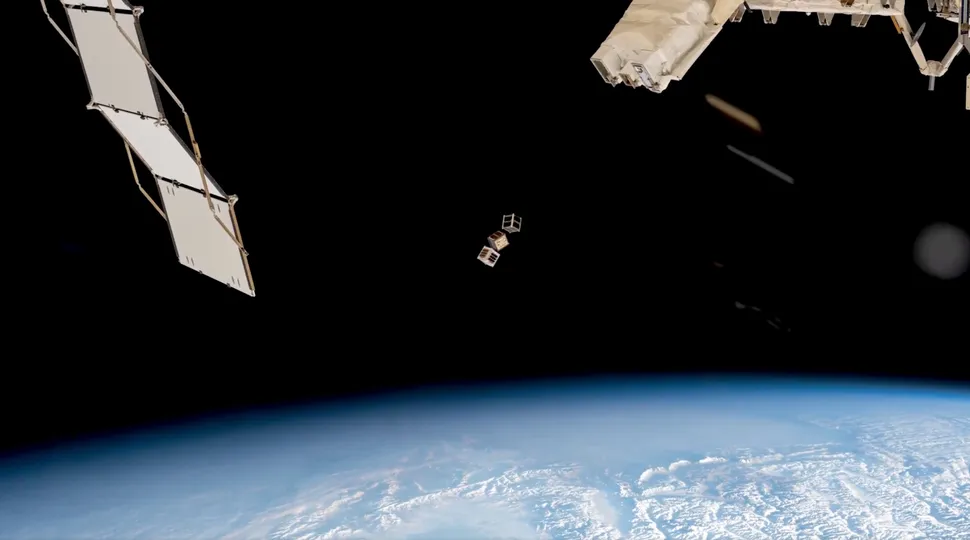An experimental satellite made of wood has been deployed from the International Space Station (ISS) to test how the renewable, sustainable material withstands the harsh orbital environment.
The satellite, designed and built by Kyoto University and Japanese wood processing company Sumitomo Forestry, is called LignoSat, a reference to the organic polymer lignin, which is prevalent in wood cells.
The 1U cubesat — a cube measuring 4 inches (10 centimeters) on a side — will remain in space for about six months before it gets pulled back into Earth’s atmosphere by drag. The mission might open new avenues for spacecraft design at a time when the potential environmental impact of satellite reentries faces increasing scrutiny.
During the mission, researchers will measure the response of LignoSat’s magnolia-wood body to the temperature swings and high radiation levels in near-Earth space.
A satellite orbiting at the altitude of the International Space Station (about 250 miles, or 450 kilometers) circles the planet every 90 minutes. During that time it gets exposed to temperatures as high as 250 degrees Fahrenheit (121 degrees Celsius) when facing the sun and as low as minus 250 degrees F (minus 157 degrees C) when in Earth’s shadow. On top of that, the spacecraft gets battered by highly charged particles of solar wind.
Exposed to such extremes, materials quickly degrade. Hence, satellite makers have so far relied on sturdy aluminum alloys — but these leave behind potentially climate-altering metallic dust when they burn upon reentry. If LignoSat withstands its space test, it could pave the way for a new generation of eco-friendly satellites.
“Geomagnetic levels will also be monitored to determine whether the geomagnetic field can penetrate the body of the wooden satellite and interfere with its technological capabilities,” NASA said in a Jan. 7 statement announcing the deployment.
LignoSat, the world’s first wooden satellite, launched to the ISS on Nov. 5 last year aboard a SpaceX Falcon 9 rocket. It was deployed from the Japanese Aerospace Exploration Agency’s (JAXA) Kibo module together with four other experimental mini-satellites in December, NASA officials said in the Jan. 7 statement.
JAXA previously tested different types of wood at the ISS, helping LignoSat’s makers choose the most resilient variety.
The space industry is currently facing a dilemma, as research suggests that the projected increase in satellites could lead to a dangerous rise in concentrations of potentially climate-changing chemicals in the otherwise pristine layers of the upper atmosphere. Aluminum, a staple in spacecraft manufacturing, is the main culprit, as it produces ozone-destroying aluminum oxides when burnt. Aluminum oxides could also alter the atmosphere’s ability to reflect sunlight, thus affecting its thermal balance.
“If we can prove our first wooden satellite works, we want to pitch it to Elon Musk’s SpaceX,” retired Japanese astronaut Takao Doi, an aerospace engineer who’s now a professor at Kyoto University, told Reuters ahead of the launch.
SpaceX, with nearly 7,000 satellites in orbit, is by far the world’s biggest satellite operator and thus potentially one of the main contributors to the satellite air pollution problem.
Source: https://www.space.com/space-exploration/satellites/worlds-1st-wooden-satellite-deploys-from-iss-to-demonstrate-cleaner-spacecraft-tech



